Heartbreaking moment CNN anchor Sara Sidner chokes on air as she reveals her stage 3 breast cancer diagnosis
CNN news anchor Sara Sidner, 51, choked up on air as she shared her stage 3 breast cancer diagnosis in a heartbreaking post.
In her powerful announcement, Sidner focused on the importance of women staying on top of their annual mammography exams.
“Take a moment to remember the names of eight women you love and know in your life. Just count them on your fingers,” Sidner said Monday.
'Statistically, one of them will develop or have breast cancer. I'm one of eight in my friend group.'
The journalist said she is in her second month of chemotherapy. She also plans to undergo a double mastectomy.
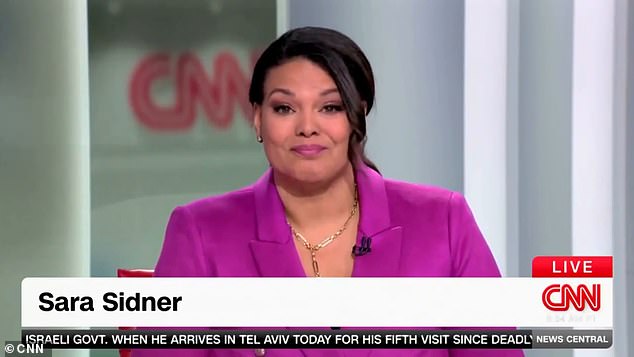
CNN news anchor Sara Sidner, 51, choked up on air as she announced her stage 3 breast cancer diagnosis
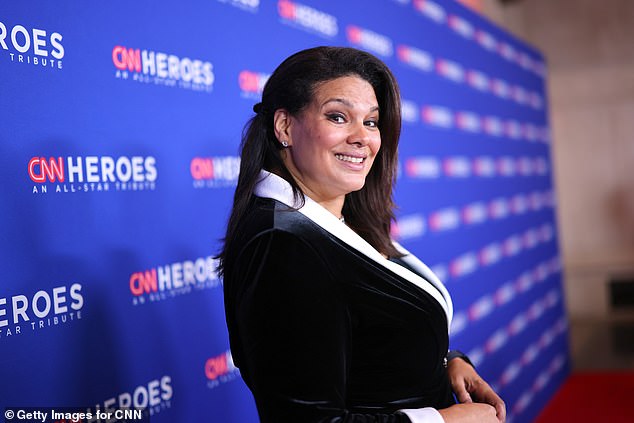

The journalist said she is in her second month of chemotherapy. She also plans to undergo a double mastectomy
Sidner also said that a breast cancer diagnosis is not a “death sentence” for the majority of women, but said she was “shocked” when she came across a specific statistic associated with the diagnosis.
“If you are a black woman, you are 41 percent more likely to die from breast cancer than your white counterparts. Forty-one percent,” Sidner said.
According to People, Sidner learned of her diagnosis just before she traveled to Israel in October to report on the ongoing war with Hamas. She was told she needed a biopsy before she could return to the US.
Days after she returned home to New York, the biopsy confirmed that the lump she noticed months earlier was indeed cancerous and had progressed to stage 3.
“When I got the news, I didn't tell anyone, not even my mother or husband or sisters or friends. “I just had to process it,” she said.
According to the Susan G. Komen Foundation website, 'black women are diagnosed with breast cancer at a younger age than white women.'
Recent data shows that the average age for black women diagnosed with breast cancer is 60, while the average age for white women is 64.
Stage 3 breast cancer refers to cancer in the breast that has spread beyond the immediate growth point.
This stage of cancer typically makes its way to nearby lymph nodes and muscles, but does not spread to other organs National Breast Cancer Foundation.
Although there are certain factors that increase a woman's chance of developing breast cancer, Sidner made it clear that she has maintained a very healthy lifestyle.
'I have never been sick a day in my life. I do not smoke. I rarely drink. Breast cancer does not run in my family. And yet here I am, with stage 3 breast cancer. It's hard to say out loud,” she said.
Well-known factors such as older age, excessive alcohol consumption, radiation exposure, tobacco use, reproductive history, postmenopausal hormone therapy, and a history of breast cancer can all increase the risk factor for being diagnosed with cancer.
Most women only know how to look for lumps on their breasts during self-examination, while there are more ways to detect breast cancer.
Nine in 10 women know that a lump is a telltale sign of breast cancer, but fewer than half are aware of the other warning signs, according to a survey of 1,000 adults.
The survey found that 93 percent of people knew to look out for lumps, while only 31 percent were aware that an inverted, retracted or downward-pointing nipple was another telltale symptom.
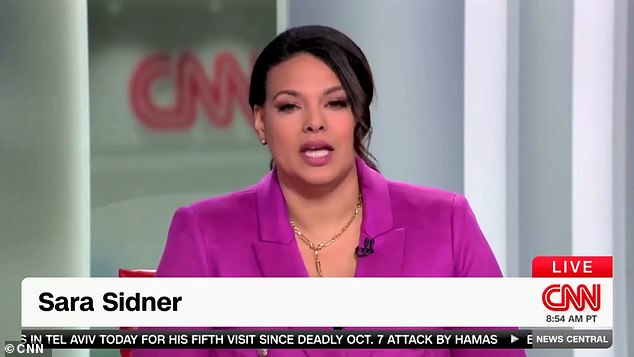

According to People, Sidner learned of her diagnosis just before traveling to Israel in October to report on the ongoing war with Hamas.
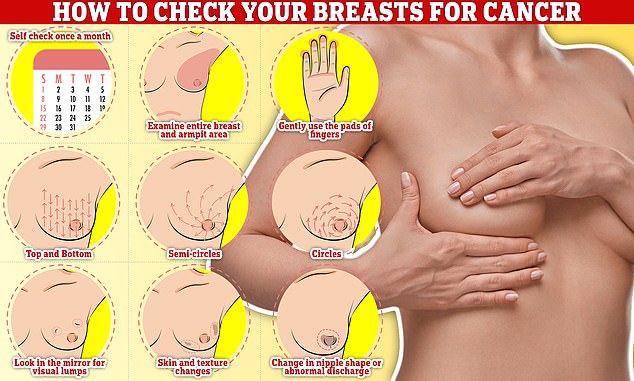

Checking your breasts should be part of your monthly routine so that you notice any unusual changes. Simply rub and feel from top to bottom, feeling in semi-circles and in a circular motion around your breast tissue to feel for any abnormalities
Less than half of respondents were aware of loss of sensation in the breasts or dimpling or thickening of the skin.
Most breast cancer cases don't show a lump that's detectable to the touch — and if they do, it often indicates a fast-growing or advanced cancer that's less treatable, experts say.
Breast cancer itself arises from a cancer cell that develops in the lining of a duct or lobe in one of the breasts.
When the breast cancer has spread to surrounding tissue, it is called 'invasive'. Some people are diagnosed with 'carcinoma in situ', where no cancer cells have grown outside the duct or lobule.
Most cases develop in people over the age of 50, but sometimes younger women are also affected. Breast cancer can develop in men, although it is rare.
The cancer can be treated in a number of ways, of which Sidner said she has chosen three: surgical removal of the affected breasts, chemotherapy and radiation.
Hormone treatments are also available as some forms of breast cancer are affected by the 'female' estrogen hormone, which is known to stimulate cancer cells to then divide and multiply.


While the diagnosis isn't great news for Sidner, she has used it as a way to shift her focus in life, while “thanking” cancer for making her appreciate what she has done.
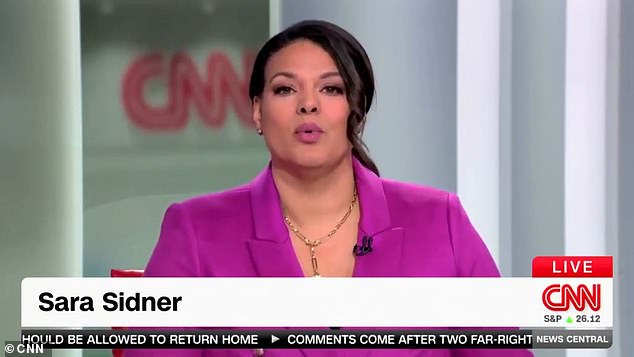

Sidner said she was “shocked” when she came across a specific statistic related to the diagnosis that showed black women are “41% more likely to die from breast cancer than white women.”
In the US, breast cancer affects 266,000 people and kills 40,000 every year.
While the diagnosis isn't great news for Sidner, she has used it as a way to shift her focus in life, while “thanking” cancer for making her appreciate what she has.
“Now here's something I never could have predicted would happen to me: I thank cancer for choosing me,” Sidner said.
“I'm learning that no matter what hell we go through in life, I'm still deeply in love with this life. And just living feels very different to me now.'
She went on to say that she no longer worried about the “silly little things” that always happened to her.
“I am here with my co-anchors, my colleagues, my family and I can love and cry and laugh and hope and that, my dear friends, is enough,” Sidner said at the end of her emotional announcement.
